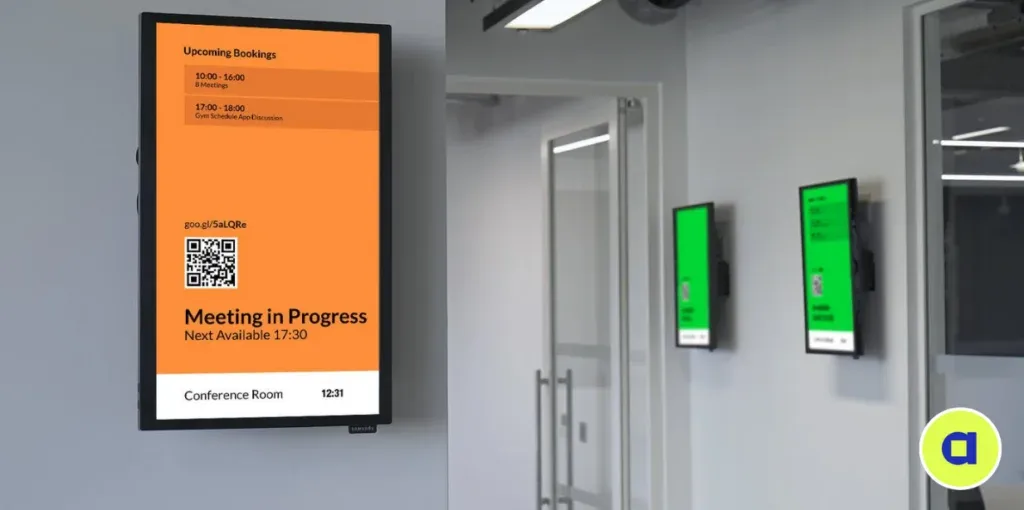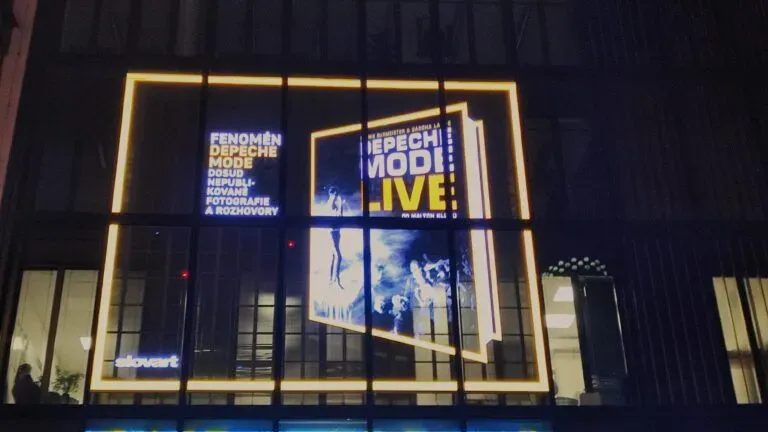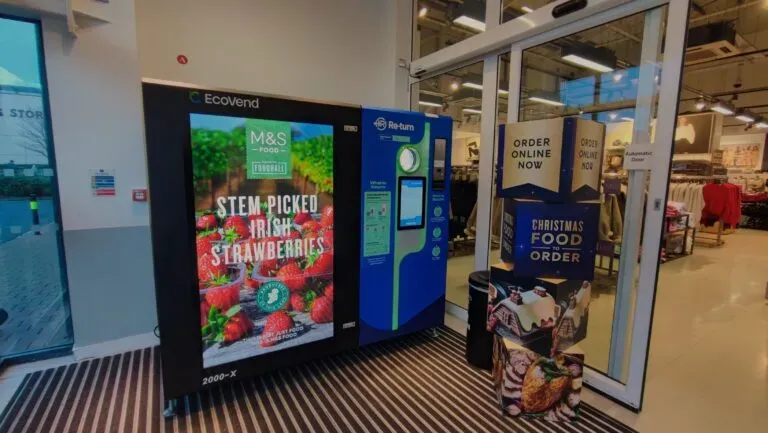Broadcasting through CMS on Digital Signage – 5 examples of content
CMS is an automated system for broadcasting advertising and informational content on Digital Signage screens indoors and outdoors.
It allows any information to be memorable: dynamically changing videos on bright screens effectively capture attention, while the ability to interact with content only strengthens customer engagement.
The tasks addressed by implementing Digital Signage include advertising, audience attention-grabbing, entertainment, information, and navigation.
Systems are indispensable marketing tools at point-of-sale locations. They enable centralized and remote management of broadcasts, instantly updating content whether it’s video, static images, streaming multimedia, graphical elements, or any textual information.
DS systems can target specific audience segments, influencing purchasing decisions directly at the point of sale.
What is this system?
A Digital Signage system (CMS) consists of several components:
Screen. Depending on the tasks, various types of screens can be used to display advertising content, including televisions, computer monitors, tablets, LED screens, LCD panels, and video walls composed of multiple panels.
Content. In a DS system, all content is digital—this can include images, videos, texts, and other information.
Media player. This device plays the content. It can be integrated into the screen or be a separate device (hardware media player). For example, if a universal computer or laptop serves as the screen, then a standard software media player serves as the media player.
Communication network. One of the main features and advantages of a Digital Signage system is the ability to manage content remotely. A stable internet connection is needed for the media player to automatically change the content. Regular Wi-Fi routers, mobile modems, or cable connections to a local network will work for this purpose.
CMS: content and digital screen network management system. A specialized centralized system handles all content management tasks. You only need to upload the advertising videos once to specify what content and where it needs to be directed. The CMS automatically uploads the necessary data, generates missing content, and transfers it to the player as video files and their display schedule.
Monitoring system. How do you ensure your screens are operational, connected to the network, and that the internet is functioning without interruptions? The monitoring system reports malfunctions before they become noticeable to visitors or staff. The system also accurately counts how many times and on which screens the ads were shown, how much internet traffic each player consumes, etc.
Simply put, Digital Signage is a personal computer with a separate content source. At its center is a management server with an application that allows uploading and distributing content across the network, scheduling broadcasts, and more.
Advantages of Digital Signage
The Digital Signage system (CMS) easily integrates into the existing infrastructure: digital screens, video cameras, and software for digital screens become elements of a single multifunctional system, which allows not only advertising but also collecting audience data, interacting with them, and targeting content.
For the system to work effectively, installing individual digital surfaces is not enough. It’s important to develop a project from start to finish, considering all necessary placement zones, the area of the sales floor, budget, goals, tasks, etc. Only such an approach to implementing Digital Signage will allow achieving the maximum effect from using digital screens.
What content can be broadcast on screens?
Digital Signage provides a wide range of possibilities for broadcasting various types of content:
1. Useful information. The system allows setting up the display of navigation signs, menus, news, schedules, announcements, real-time queues, order statuses, and more on screens.
2. Advertising. Probably, the system is most frequently implemented for broadcasting advertisements. Bright special offers, promotions, menu highlights, top product positions, images of products that need to be sold promptly, etc. — there are countless options for advertising content broadcasted on screens.
3. Entertainment content. Entertainment content is also important in Digital Signage, as it increases customer interest and loyalty. Interactive screens can display surveys and simple games.
4. Social media content. Integration with social media allows broadcasting user reviews and comments about your product.
5. Weather and traffic. Digital Signage can be used to set up the broadcast of current weather information and traffic conditions.
These types of content can be combined and adapted depending on specific needs and goals, making Digital Signage a flexible and multifunctional tool for communication and visual information presentation.
Examples of Digital Signage use
Today, Digital Signage is one of the most promising technologies used for advertising in retail. Indoor LED screens installed in departments and checkout areas of stores engage the customer in communication even before they pay for their purchases. In this case, this software helps reduce printing and distribution costs of advertisements, optimize space in checkout areas, and increase the average ticket size.
DS systems are widely implemented in food service establishments. By interacting with the screen, a person can place an order, pay with a card, receive a receipt and order number, and wait for their order while monitoring the progress on another screen—this is also Digital Signage.
Previously, Digital Signage was understood as ordinary monitors for broadcasting information. Today, it represents a means of two-way communication with the consumer. The application area of DS has expanded, now offering limitless possibilities for displaying advertisements and being implemented in any public places with high customer traffic:
– Shopping and business centers. DS systems in shopping centers not only allow placing advertisements and informing visitors about special offers and promotions but also displaying navigation within the center, weather, and traffic conditions.
– Cinemas. Digital screens in the ticket area, cinema bar, and lobby allow visitors to quickly familiarize themselves with the schedule of showtimes, ticket prices, and the availability of seats in theaters.
– Airports and train stations. Thanks to DS systems integrated with the transport hub’s database, people can follow the schedule and find their check-in counters. Additionally, Digital Signage opens limitless possibilities for displaying advertisements for products in stores located within the airport or station complex.
– Cafes and shops. Digital screens have become an effective solution for cafes and fast food outlets as they significantly boost sales. Digital Signage is perfect for displaying menus and promotions in restaurants and cafes, allowing quick updates on prices and new dishes.
– Educational institutions. DS systems in schools and institutes predominantly display informational content. Automatic information display on digital screens enables students and teachers to stay updated on current events, receive timely notifications about schedule changes, and actively participate in the public life of the educational institution.
Thus, DS systems can be used not only for broadcasting advertisements but also for building effective communication with consumers. The simplicity and convenience of managing Digital Signage (CMS) allow for instant content changes, quickly responding to demand fluctuations and any other changes in consumer behavior.
Advision — Content Management System (CMS) for remote management and media planning of video and audio content broadcasting. We help offline businesses and advertising companies automate their workflows and implement a robust Digital Signage infrastructure using our proprietary software and hardware solutions.
Contact us, and we will help you implement the most modern technologies to solve your problems!
Share the news




















